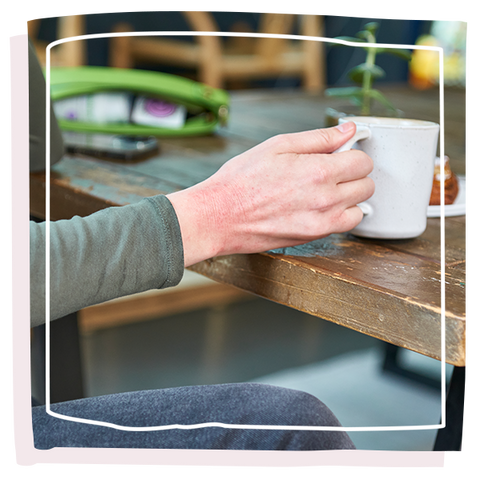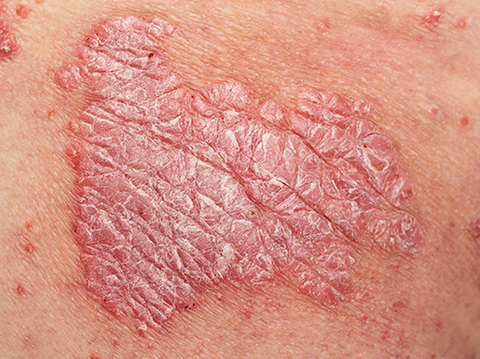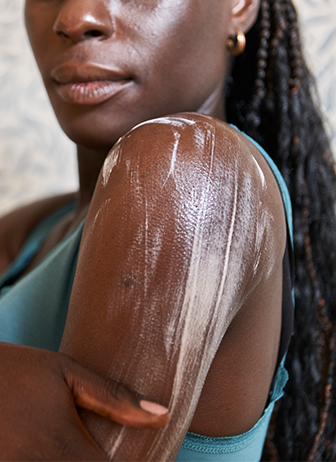An Introduction to Dry Skin
While they might be common, not everyone has had the experience of skin conditions like Eczema, Psoriasis or Ichthyosis – but we all know what it’s like to get stuck with dry skin. Here’s a guide to everything you need to know about spotting, treating and taking care of skin that needs a drink.
What is Dry Skin?
Dry skin is pretty much what it says on the tin – something you get when your skin doesn’t have the water or naturally occurring oils it needs to stay soft, supple and smooth. When it comes to what does dry skin look like, it’s often red or scaly in appearance and can be itchy and uncomfortable¹.
Did you know…?
Dry skin can have fancy names too! it’s sometimes referred to as Xerosis or Xeroderma.²
Are there different types of dry skin?
No two people’s skin is the same, so you could say that everyone has a different type of dry skin! Still, while dry skin is often ‘just’ dry skin, sometimes it can be the first sign of things like Eczema, or even cause a flare-up³. So there may not always be a clear line where dry skin ends and another condition begins.
A lot of these are related to temperature, but there’s another contributing factor to dry skin: age. The older we get the more likely dry skin becomes – and it’s a one of the symptoms brought on by the menopause. Just what you need to make those hot flushes even more fun.⁴
What are the symptoms of Dry Skin?
You might think that the symptoms are just cosmetic, but the effects of dry skin are more than skin-deep. On a dry day, your skin will feel itchy, tighter and more sensitive than usual – especially after a bath or shower. It’s rough to the touch and can look scaly or flaky. And as it dries out more, you might start to see fine lines or cracks with occasional redness or bleeding. Dehydration really makes a difference for our skin!⁵
How should I take care of Dry Skin?
Dry skin treatment and dry skin prevention both start with one key thing: moisturising! This creates a seal over the top of your skin which stops moisture escaping – locking in all that essential liquid that keeps it smooth and supple.
Apply straight after a bath or shower when skin is at its most hydrated. And if you’re looking for another method of how to treat dry skin, it’s best to keep baths or showers to 15 minutes or less, use warm rather than hot water and use a gentle soap.⁶
When it comes to choosing a moisturiser, thicker is most definitely better to really build up that seal. Epaderm cream is a great choice for this, or for an even thicker option, there’s the Epaderm Ointment too. Both are made from just a handful of clinically proven ingredients (6 for the cream and 3 for the ointment) so there’s less in there to potentially annoy sensitive skin. Apply every day, as often as you like – you can even pop one of the smaller pots in your bag while you’re on the go.
How to prevent Dry Skin?
Make sure you’re never too far away from your moisturiser.
If you’re looking at how to cure dry skin or how to get rid of dry skin completely, there isn’t always an answer – we all get a little dryness from time to time! However, if your dry skin is significantly red, sore or causing you distress, just make an appointment with your doctor or speak to a dermatologist.⁷
Find out more about Dry Skin
So that’s the lowdown on dry skin! If you think your dry skin could be a sign of another condition, take a look at our dedicated pages for these conditions – they might have the answers you’re looking for.
Epaderm Library
Our website is jam-packed full of useful information from our skin blogs, user case studies to our in-depth FAQs. Discover more by clicking on the relevant section!References
¹ https://www.netdoctor.co.uk/conditions/skin-and-hair/a3627/coping-with-dry-skin/
² https://www.netdoctor.co.uk/conditions/skin-and-hair/a3627/coping-with-dry-skin/
³ https://www.nhs.uk/conditions/atopic-eczema/
⁴ https://www.netdoctor.co.uk/conditions/skin-and-hair/a3627/coping-with-dry-skin/
⁵ https://www.netdoctor.co.uk/conditions/skin-and-hair/a3627/coping-with-dry-skin/
⁶ https://www.netdoctor.co.uk/conditions/skin-and-hair/a3627/coping-with-dry-skin/
⁷ https://www.netdoctor.co.uk/conditions/skin-and-hair/a3627/coping-with-dry-skin/

















